
Key Takeaways
- The largest farms in the world cover staggering areas, often comparable in size to entire countries or large states, demonstrating agriculture on a truly colossal scale
- The largest farms primarily focus on either large-scale dairy production with massive herds or extensive cattle grazing across huge pastoral leases
- The farms manage impressive numbers of animals, with dairy operations housing hundreds of thousands of cows and cattle stations running herds often exceeding tens of thousands
What is the largest farm in the world? The answer might surprise you, as the scale and scope of the biggest agricultural holdings around the globe are truly staggering. These aren’t just big farms; they are immense landscapes dedicated to feeding populations on an industrial scale.
This article will show you the largest farms in the world, exploring their incredible sizes, primary focuses, the total number of animals they manage, and their significant roles in regional and global food production.
Do you need help shipping live animals from or to livestock auctions? Atlantic Project Cargo is always here to help. We provide reliable, safe, and timely animal delivery, following all regulations and laws.
Get a Free Quote!
1. Mudanjiang City Mega Farm, China
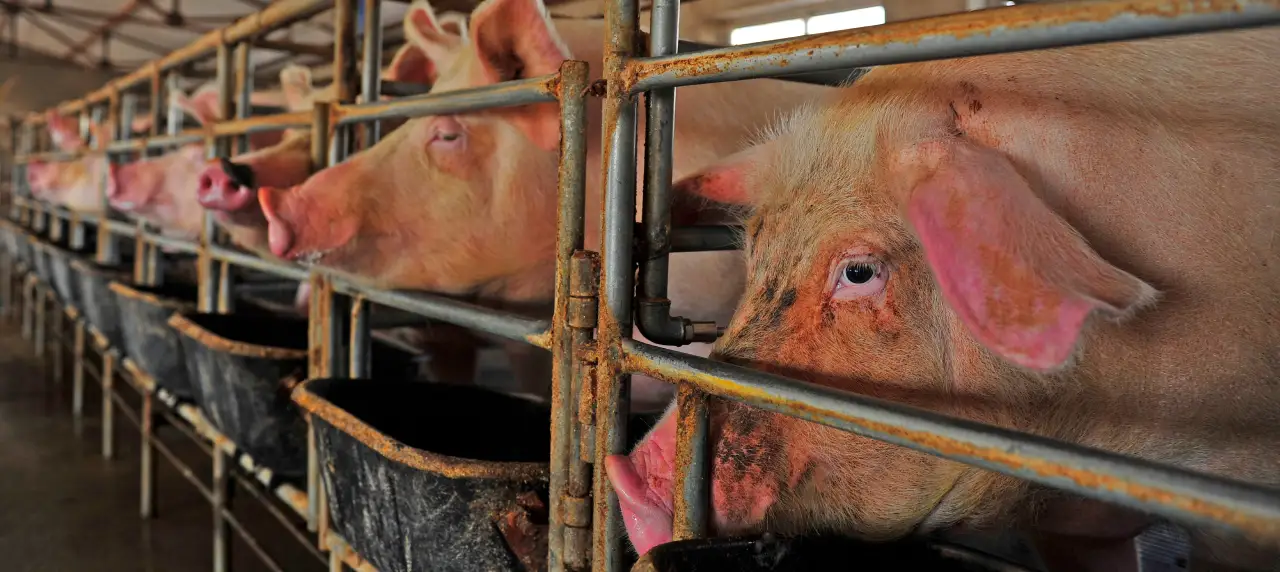
| Feature | Detail | Notes |
|---|---|---|
| Size | Around 22.5 million acres | Roughly the size of Portugal |
| Focus | Dairy production | Specializes in milk and dairy |
| Livestock | Around 100,000 cows | Massive dairy herd |
| Production | Around 800 million liters annually | Significant milk output |
| Significance | Exemplifies China's agricultural modernization and self-sufficiency push | Represents a trend in mega-farming |
In northeastern China lies an agricultural operation of huge scale—the Mudanjiang City Mega Farm. Recognized as the largest farm in the world, this colossal enterprise signifies a major leap in industrialized agriculture and plays a significant role in meeting the growing demand for dairy products, particularly in the East Asian market and Russia.
Reported to be in the range of 22.5 million acres, the total size of the Mudanjiang City Mega Farm is difficult to fully comprehend—it is often compared to the land area of entire countries or multiple US states combined. This enormous farm is dedicated primarily to dairy production, housing a massive herd of around 100,000 cows.
The farm’s operations are characterized by a heavy reliance on modern technology and large-scale industrial processes. This includes automated milking systems capable of handling the large number of cows efficiently. The integration of technology extends to various aspects of farm management, aiming to optimize production and streamline operations.
As of 2025, the Mudanjiang City Mega Farm continues to be the biggest farm in the world, and shows its capabilities in large-scale agricultural development and its strategic positioning in international trade. Its ongoing operations will likely continue to be observed for their economic performance, technological advancements, and efforts towards sustainable practices in the context of mega-farming.
2. Modern Dairy, China
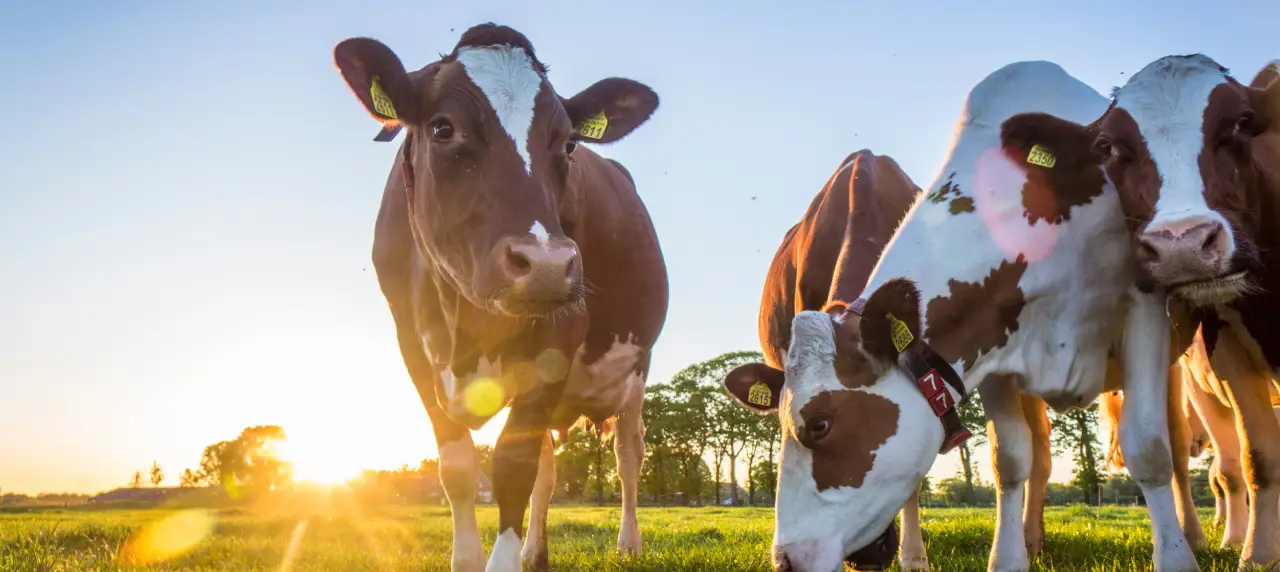
| Feature | Detail | Notes |
|---|---|---|
| Size | Approximately 11 million acres | Bigger than Denmark |
| Focus | Raw milk production (core business) | Also involved in feed, forage, breeding, and digital platform |
| Livestock | Over 490,000 dairy cows (as of Dec 2024) | One of the largest dairy herds managed by a single company globally |
| Production | Significant annual raw milk output (e.g., 2.55 million tons in 2023) | High average milk yield per cow |
China Modern Dairy Holdings Ltd. stands as a titan in the Chinese dairy industry, a leading company that has significantly contributed to the modernization and large-scale development of raw milk production in the country. Established in 2005, the company has rapidly grown to become one of the largest dairy farms in the world, distinguished by its integrated business model and embrace of technology.
Headquartered in Ma’anshan, Anhui province, Modern Dairy’s operations span across China, with a network of numerous large-scale dairy farms. As of December 2024, the company operated 47 dairy farming companies with a huge herd exceeding 490,000 dairy cows, with plans to reach 500,000 by the end of 2025. This impressive scale positions them as the biggest dairy farm in the world and as a dominant force in the domestic raw milk market, ranking as the second-largest raw milk producer in China in 2023.
What sets Modern Dairy apart is its pioneering business model, which integrates various stages of the dairy value chain. This “integration of planting, breeding, and processing” approach involves cultivating forage grass and raising dairy cows on large-scale farms.
Today, Modern Dairy continues to be the biggest cow farm in the world, and they are planning to strengthen their position in the future.
3. Anna Creek Station, Australia

| Feature | Detail | Notes |
|---|---|---|
| Size | Around 5.8 million acres | World's largest cattle station; larger than Israel |
| Focus | Cattle grazing | Primarily, beef production in an dry environment |
| Livestock | Varies depending on season, capable of carrying up to 16,500+ cattle | Primarily Santa Gertrudis, with other breeds also present |
| Production | Beef cattle for market | Operates within the Australian beef industry |
| Significance | The world's largest cattle station | Historically part of the S. Kidman & Co empire; now owned by Williams Cattle Company |
Anna Creek Station, a name synonymous with immense scale and the rugged resilience of pastoral life. Recognized as the world’s largest cattle station, Anna Creek is a working icon of Australia’s agricultural landscape, operating in an environment that presents both formidable challenges and a unique way of life.
Anna Creek Station sprawls across an enormous area, often cited as approximately 5.8 million acres, or about 23,677 square kilometers. This makes it the largest cattle ranch in the world and the biggest farm in Australia. Located in South Australia, its nearest township is the tiny settlement of William Creek, which is in fact surrounded by the station’s huge property, while the town of Coober Pedy serves as a key hub for freight and supplies.
The history of Anna Creek Station dates back to 1863. Initially established as a sheep property, the early owners faced significant challenges from dingo attacks, which led to a strategic shift towards cattle farming. Over the decades, Anna Creek became a cornerstone of the legendary S. Kidman & Co empire, founded by Sir Sidney Kidman, famously known as “The Cattle King,” who built a huge network of pastoral leases across Australia. Anna Creek served as a crucial link in Kidman’s strategic movement of livestock across the country, utilizing access to water sources.
In a significant change of ownership in 2016, Anna Creek Station was acquired by the Australian-owned Williams Cattle Company. This transition marked a new chapter for the historic property, keeping it in Australian hands.
4. Clifton Hills Station, Australia
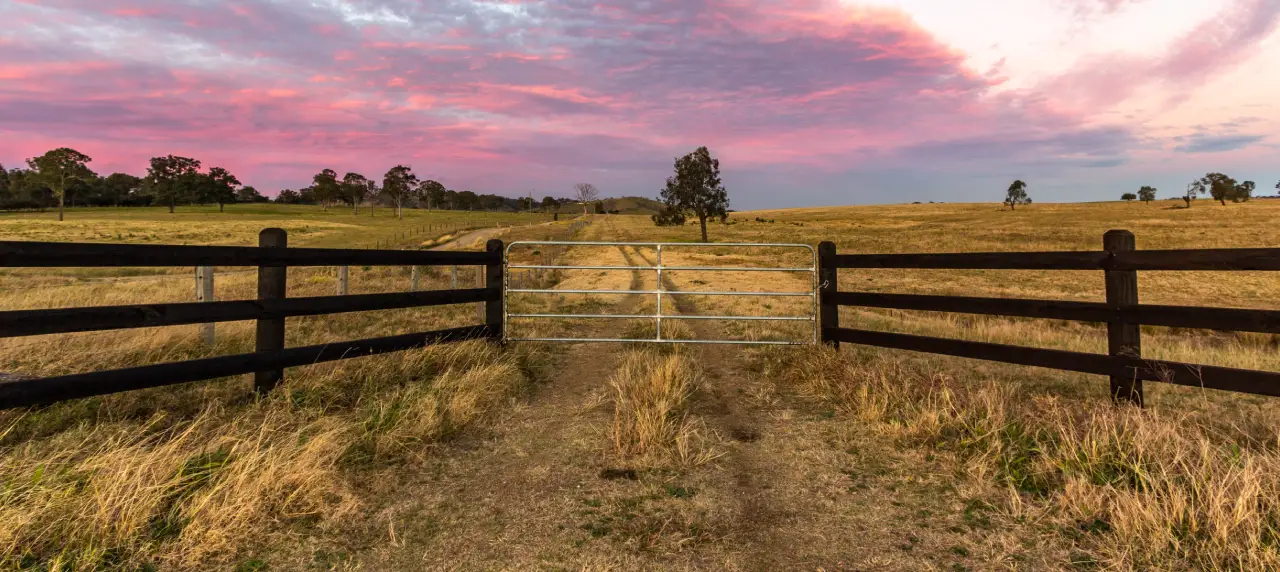
| Feature | Detail | Notes |
|---|---|---|
| Size | Approximately 4 million to 4.2 million acres | Second-largest cattle station on Earth, bigger than Montenegro (13,812 sq km) |
| Focus | Cattle grazing | Located in the Channel Country, benefits from the Diamantina River floods |
| Livestock | Estimated around 18,000 cattle (around the time of the 2018 sale) | Known to run organically certified cattle |
| Production | Beef cattle for market | Operates within the Australian beef industry |
| Significance | Second of the top 10 biggest cattle stations in the world; | Acquired by Crown Point Pastoral Company in March of 2018 |
Clifton Hills Station, situated in the far north of South Australia, stands as a true titan of the Australian pastoral landscape. This historic cattle station is one of the biggest cattle ranches in the world.
Established in 1876, Clifton Hills Station sprawls across an immense area, reported to be around 16,500 to 17,000 square kilometres. This huge expanse makes it larger than many small countries and highlights the total scale of pastoral operations in the Australian outback. Located approximately 132 kilometres south of Birdsville and 200 kilometres northwest of Innamincka, the station is strategically positioned within the Channel Country, a unique geological region characterized by a network of braided rivers and floodplains.
The operation of Clifton Hills is intrinsically linked to the Channel Country’s ephemeral river systems, including the Diamantina, Georgina, and Cooper Creek. While the landscape encompasses diverse terrain, including gibber plains and sandhills, the productivity of the station is heavily reliant on the floodwaters that periodically flow down these rivers. These floods, when they occur, inundate huge areas of the floodplain, depositing nutrient-rich silt and triggering an explosion of feed that is vital for the station’s cattle. The Diamantina River alone is said to consistently flood around 1,500 square kilometres annually, creating prime fattening country.
In recent years, Clifton Hills Station changed hands, being acquired by Crown Point Pastoral Co in 2018. This transition marked a new chapter for the historic property, bringing it under the ownership of experienced Central Australian cattle producers.
Clifton Hills Station remains a remarkable example of large-scale pastoralism in the Australian outback, embodying a history of resilience and adaptation to a challenging yet ultimately rewarding environment. Its continued operation highlights the enduring significance of the Channel Country for Australia’s beef industry.
5. Alexandria Station, Australia
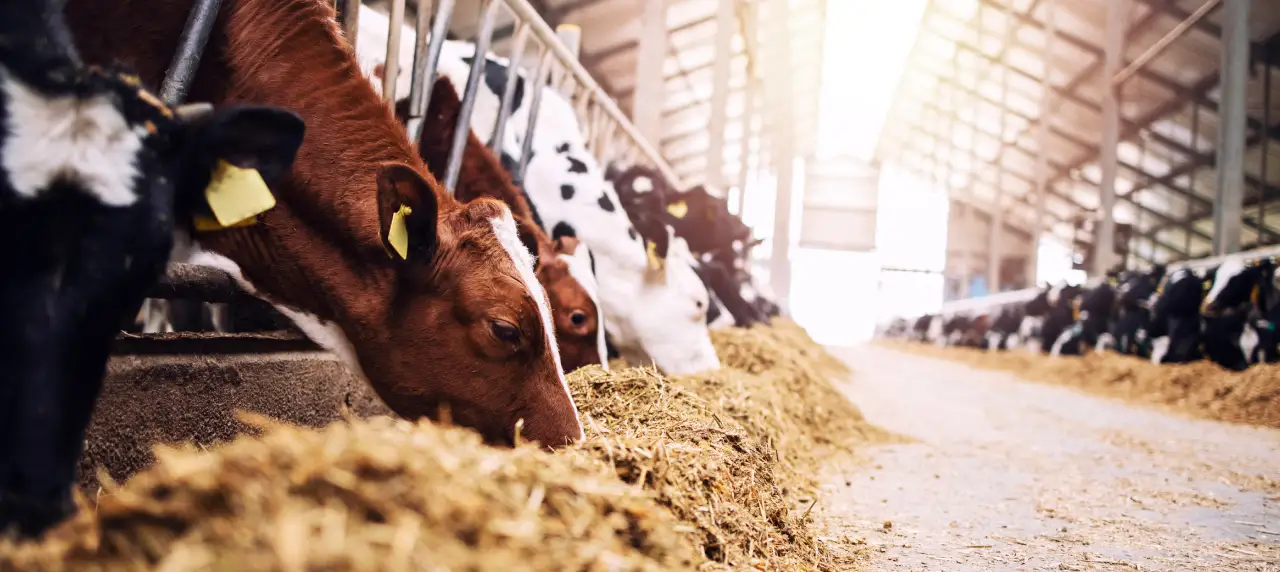
| Feature | Detail | Notes |
|---|---|---|
| Size | Approximately 3.98 million acres, the Northern Territory's largest station | Bigger than Connecticut state in the US |
| Focus | Cattle grazing | Situated on the Barkly Tableland |
| Livestock | Around 55,000 cattle (estimated) | Primarily Brahman, Belmont, and Charbray breeds |
| Production | Beef cattle and hay harvesting for the owning company | Key property within the North Australian Pastoral Company (NAPCo) operations |
| Significance | The third-largest cattle ranch in the world | Established before 1877 |
Alexandria Station, located in the Northern Territory of Australia, is synonymous with large-scale cattle production. As one of Australia’s largest cow farms, it plays a crucial role in the nation’s beef industry and holds a rich history deeply intertwined with the development of the Top End.
Established prior to 1877, Alexandria Station spans an impressive area of approximately 16,116 square kilometres. This makes it the largest pastoral property in the Northern Territory and one of the world’s biggest farms. Situated about 173 kilometres northwest of Camooweal and 273 kilometres east of Tennant Creek, the station occupies a significant portion of the fertile Barkly Tableland, a region renowned for its Mitchell grass plains.
For over a century, Alexandria Station has been a flagship property of the North Australian Pastoral Company (NAPCo), one of Australia’s oldest and largest agricultural enterprises. This long-standing ownership has contributed to the station’s consistent development and its reputation for quality cattle production.
The primary operation at Alexandria is cattle grazing, with a herd size that can reach around 55,000 head. The station’s diverse landscape, featuring open plains, floodplains, and wooded sandhills, provides varied grazing environments. The dominance of Mitchell grass on the plains offers a valuable feed source, supporting the substantial cattle numbers. In addition to grazing, the station also harvests a significant amount of hay from these plains, utilized for their own operations and potentially other properties within the NAPCo group.
Life and work on Alexandria Station, like other remote outback properties, present unique challenges and rewards. The total isolation and scale require a dedicated and self-sufficient workforce. Managing the effects of climate variability, including sea and flood events, is a constant consideration. Maintaining infrastructure across such a huge area and managing issues like weed infestations, as highlighted by efforts to control Parkinsonia, are ongoing tasks.
Despite these challenges, Alexandria Station remains a highly productive and significant enterprise within the Australian agricultural sector. Its long history, huge landscapes, and commitment to cattle breeding and sustainable practices solidify its position as a cornerstone of the Barkly Tableland and a vital part of Australia’s pastoral heritage.
6. Davenport Downs, Australia

| Feature | Detail | Notes |
|---|---|---|
| Size | Around 3.7 million acres, run in aggregate with Springvale Station | Bigger than Qatar |
| Focus | Cattle fattening operation | Located in the Channel Country of Queensland |
| Livestock | Capacity for over 29,000 head (cattle) | Receives cattle from other properties within the owning company |
| Production | Beef cattle for market | Benefits from the natural flooding of the Channel Country |
| Significance | Fourth largest in Australia and the world | Owned by Paraway Pastoral Company, historically established in the 1860s |
Davenport Downs Station, located in the heart of Queensland’s Channel Country, is a colossal cattle property renowned for its significant size and its crucial role in the Australian beef industry, particularly as a prime bullock fattening operation. As the largest cattle station in Queensland and the fourth largest in Australia, it has huge landscapes and relies on the unique Channel Country ecosystem, making it a subject of considerable interest.
Situated in the Diamantina Lakes area of southwestern Queensland, approximately 184 kilometres southeast of Boulia and 262 kilometres northeast of Birdsville, Davenport Downs is strategically positioned within the famed Channel Country. This region is characterised by a network of braided rivers and floodplains that, after infrequent but often substantial rainfall events upstream, become inundated, transforming the dry landscape into a vibrant and fertile area.
The station, which includes the aggregation of the original Davenport Downs and the neighbouring Springvale property, covers an immense area of approximately 1.51 million hectares (about 15,100 square kilometres). This makes it a truly colossal enterprise, capable of carrying a substantial number of cattle, with a reported capacity of over 29,000 head.
The history of Davenport Downs dates back to before 1878, with notable early ownership by pastoralist James Rutherford. Over the decades, the property has changed hands, eventually being acquired by Paraway Pastoral Company, its current owner, with the purchase of Davenport Downs in 2009 and Springvale in 2011. Paraway Pastoral Company is a significant player in the Australian agricultural sector, and Davenport Downs is a linchpin in their northern cattle operations.
Davenport Downs functions primarily as a bullock fattening facility. Cattle from Paraway’s breeding properties in northern Australia are often sent to Davenport Downs to be grown out before being sent to market, typically on the East Coast.
Davenport Downs stands as a testament to the scale and nature of pastoralism in the Australian outback. Its history, immense size, and strategic importance as a fattening facility within the Channel Country solidify its position as a key asset in the nation’s beef production landscape.
7. Home Valley Station, Australia
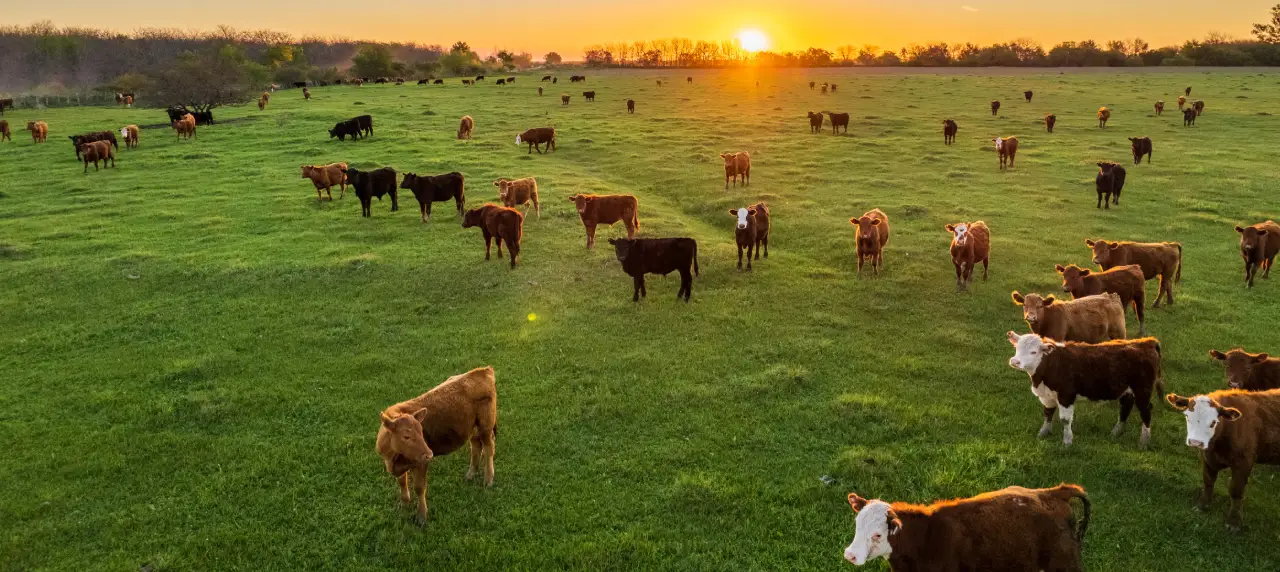
| Feature | Detail | Notes |
|---|---|---|
| Size | Aggregated area exceeding 3.5 million acres (with Karunjie and Durack River Stations) | Bigger than Puerto Rico |
| Focus | Cattle station, Tourism Resort, Indigenous Training Facility | Diverse operations in the East Kimberley |
| Livestock | Working cattle station with a Brahman breeding program | Specific recent herd numbers less emphasized than other aspects |
| Production | Beef cattle, Tourism and hospitality services | Contributes to both the pastoral and tourism economies |
| Significance | Major Indigenous-owned enterprise | Owned by the Indigenous Land and Sea Corporation on behalf of Traditional Owners |
Home Valley Station, situated in the East Kimberley region of Western Australia, is a unique and compelling property that blends large-scale cattle operations with a tourism enterprise. Situated on the iconic Gibb River Road, approximately 120 kilometres west of Kununurra, the station is set against the stunning backdrop of the majestic Cockburn Range and is bordered by the mighty Pentecost River.
Home Valley Station, along with the neighbouring Karunjie and Durack River Stations, is owned by the Indigenous Land and Sea Corporation (ILSC) on behalf of the Balanggarra people, the Traditional Owners of the land. This significant ownership model underscores a commitment to providing economic opportunities, training, and a connection back to Country for Indigenous Australians. The combined area of these three stations is huge, exceeding 1.4 million hectares (3.5 million acres), highlighting the immense scale of the pastoral leases in this remote part of Australia. Home Valley Station itself covers approximately 615,000 hectares.
Historically, Home Valley was a traditional pastoral lease focused solely on cattle grazing. However, the ILSC’s acquisition and subsequent investment have transformed it into a multifaceted operation. While still a working cattle station running the HV8 brand, it has also been developed into a premium tourism destination. This diversification provides a sustainable economic model and creates employment and training pathways for local Indigenous people in hospitality, tourism, and pastoral activities.
The landscape of Home Valley Station is incredibly diverse. It encompasses the imposing Cockburn Range, the expansive floodplains of the Pentecost River, and areas of bushland. This varied terrain supports both the cattle operation and provides the stunning natural attractions that draw tourists. The reliance on natural water sources like the Pentecost River and Bindoola Creek, particularly during and after the wet season, is crucial for both the environment and the station’s activities.
Operating in a remote Kimberley location presents logistical challenges, including accessibility, particularly during the wet season when roads can be cut by flooding. Maintaining infrastructure across such a large area and managing the natural environment are ongoing tasks. However, the station’s integration of cattle production and tourism, coupled with its Indigenous ownership and focus on training and cultural experiences, provides a unique and successful model for sustainable development in the remote Australian outback. Home Valley Station stands as a compelling example of how pastoral heritage and tourism can converge to create opportunities and celebrate the rich culture and breathtaking landscapes of the Kimberley.
8. Innamincka Station, Australia
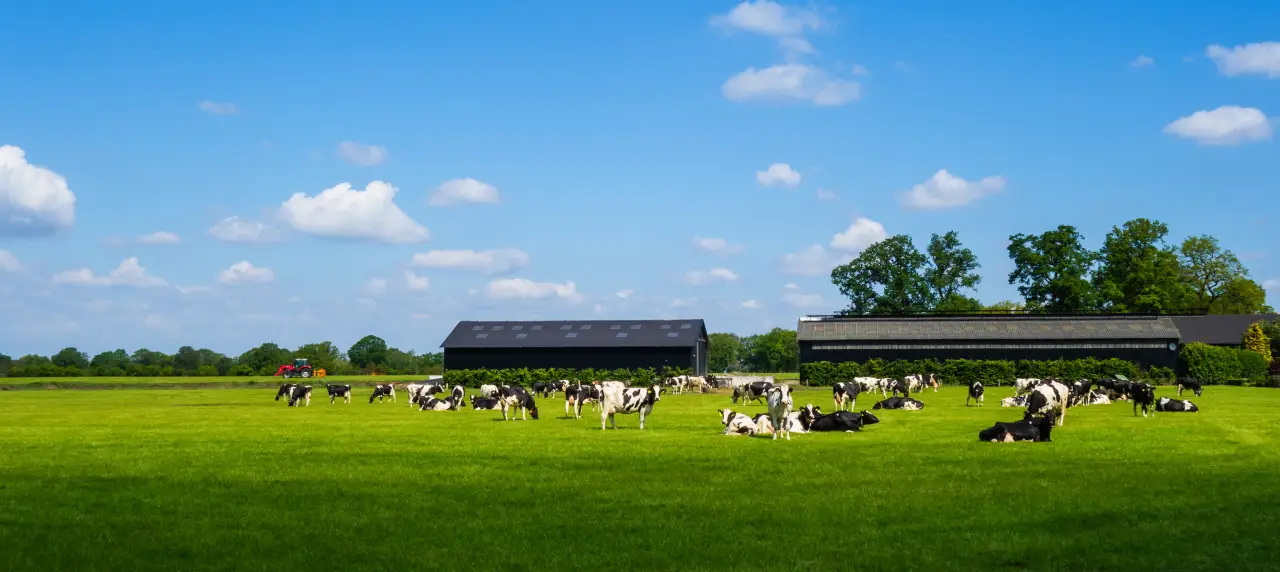
| Feature | Detail | Notes |
|---|---|---|
| Size | Approximately 3.35 million acres, the third-largest in South Australia | Almost the size of the total area of the Bahamas |
| Focus | Cattle grazing | Located on Cooper Creek in the Channel Country |
| Livestock | Up to 13.000 heads, depending on the season | Historically ran Santa and Brahman crosses; capable of carrying thousands |
| Production | Beef cattle for market | Operates within the Australian beef industry |
| Significance | Historically important early station on Cooper Creek | Now owned by Crown Point Pastoral Company |
Innamincka Station, located in the remote northeast of South Australia, is a huge pastoral lease deeply embedded in the history and unique environment of the Channel Country. This iconic cattle station is not only one of the largest cattle ranches in the world but also holds a significant place in the narratives of early Australian exploration and the challenging realities of outback life.
Established in 1872 by Robert Bostock, Innamincka Station was one of the earliest permanent European settlements along the Cooper Creek. Its name is believed to be derived from Aboriginal words, possibly meaning “your shelter” or referring to a waterhole. The station’s history is intertwined with legendary figures like Sidney Kidman, the “Cattle King,” who acquired Innamincka in 1908, recognizing its potential within his huge pastoral empire, particularly its access to the life-giving, albeit intermittent, waters of the Channel Country.
Today, Innamincka Station spans an impressive area of approximately 1.35 million hectares (around 13,500 sq km). This immense size allows for extensive grazing operations, which are primarily focused on Santa Gertrudis cattle, a breed known for its suitability to dry conditions. The station’s carrying capacity can reach up to 13,000 head, although this can fluctuate significantly depending on seasonal conditions.
The operational heart of Innamincka Station lies in its relationship with the Cooper Creek, a major river system within the Channel Country. While the region is typically dry, floodwaters originating from rainfall in Queensland periodically surge down the Cooper, inundating huge areas of the station’s floodplains. These floods, though irregular, are vital for replenishing waterholes and stimulating the growth of feed, transforming the landscape, and providing crucial resources for the cattle. The station’s location near the picturesque Malkumba-Coongie Lakes National Park, an area of significant ecological importance when flooded, further highlights its connection to these vital water systems.
In recent years, the ownership of Innamincka Station has seen changes. It was part of the portfolio held by Hancock Agriculture and S. Kidman & Co before being acquired by Crown Point Pastoral Company in early 2022. This transition marks a new era for the station under the stewardship of experienced Central Australian pastoralists.
Innamincka Station remains a powerful symbol of the resilience required for pastoralism in Australia’s dry interior. Its deep history, reliance on the unpredictable but regenerative power of the Channel Country floods, and its continued operation as a major cattle enterprise underscore its enduring significance in the story of the Australian outback.
9. Wave Hill Station, Australia
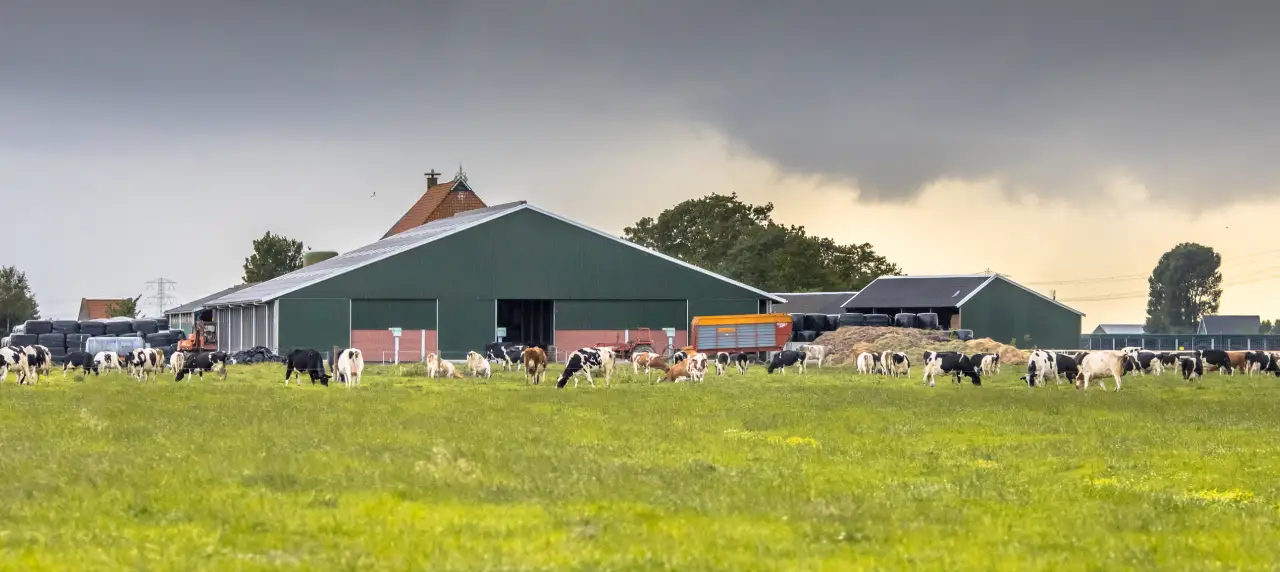
| Feature | Detail | Notes |
|---|---|---|
| Size | Approximately 3.34 million acres; often aggregated with Cattle Creek Station | Two times bigger than Delaware state |
| Focus | Cattle breeding and grazing | Located in the Victoria River District of the Northern Territory |
| Livestock | Runs Brahman and Brahman cross cattle | Capable of carrying tens of thousands of heads, depending on the season |
| Production | Beef cattle for live export and southern markets | Operates within the Australian beef industry |
| Significance | Large and historically significant pastoral property | Currently owned by a syndicate involving Jumbuck Pastoral Co |
Wave Hill Station, located in the Victoria River District of the Northern Territory, is a name that resonates far beyond the boundaries of a typical Australian cattle property. While it is a huge and operational station, its history is inextricably linked to a pivotal moment in Indigenous Australians’ struggle for land rights—the Gurindji Walk-Off.
Established in 1883, Wave Hill Station is a large pastoral lease covering approximately 13,500 square kilometres. Its landscape is diverse, featuring rolling basalt black soil plains, red breeder country, and areas of spinifex country, watered by the Victoria and Camfield rivers and numerous creeks. For many decades, the station was owned by the British pastoral company Vestey Brothers, who acquired it in 1914.
Today, Wave Hill continues to operate as a large cattle station, primarily running Grey Brahman cattle, a breed well-suited to the Northern Territory environment. The station employs a substantial team, with traditional stock camp activities like mustering on horseback, aided by helicopters and motorbikes, remaining a core part of the operation during the dry season.
The legacy of the Gurindji Walk-Off remains an integral part of Wave Hill’s identity. The events of 1966 and the subsequent struggle for land rights transformed the historical narrative of the station and the surrounding region. While it functions as a modern cattle enterprise, Wave Hill stands as a powerful reminder of the historical injustices faced by Indigenous Australians and the significance of their fight for recognition and land rights. The area around Daguragu remains a place of immense cultural importance to the Gurindji people.
Wave Hill Station, therefore, represents a complex intersection of pastoral industry, challenging outback environment, and a profound history of Indigenous resistance and the pursuit of justice.
10. Marion Downs, Australia
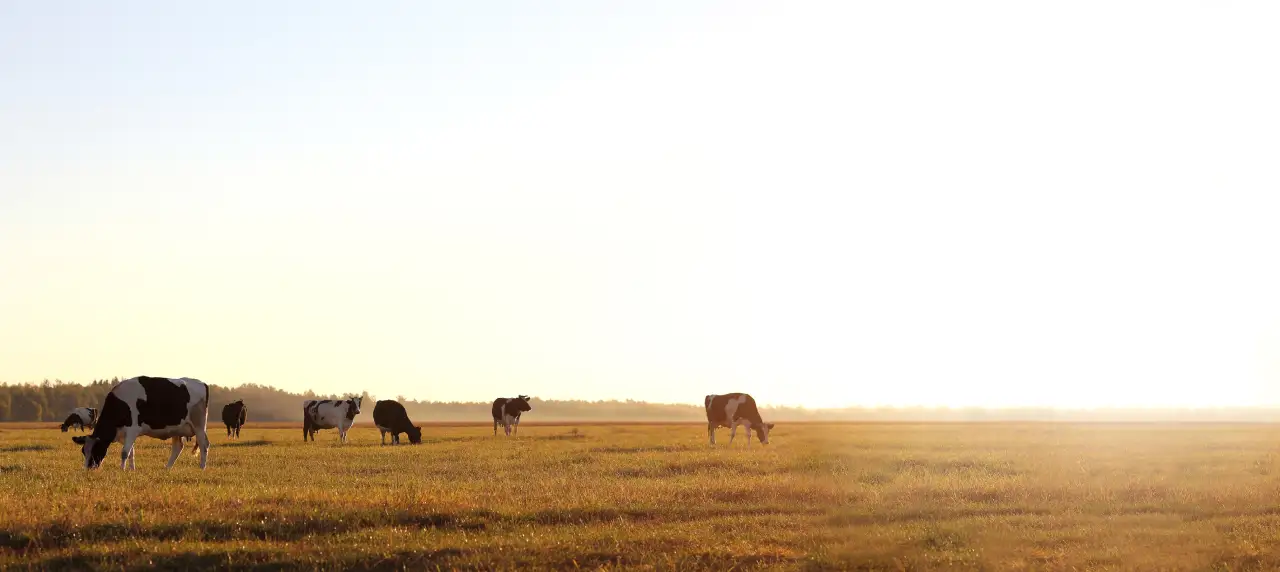
| Feature | Detail | Notes |
|---|---|---|
| Size | Approximately 3 million acres, run with the Herbert Downs outstation | Bigger than Jamaica |
| Focus | Cattle grazing | Located in the Channel Country of Central West Queensland |
| Livestock | Up to 15.000 heads | Benefits from the Channel Country's water systems |
| Production | Beef cattle for market | Operates within the Australian beef industry |
| Significance | Long-term ownership by North Australian Pastoral Company (NAPCo) | Ranked as one of the largest stations in Australia |
Marion Downs Station, situated in the Channel Country of far western Queensland, stands as a prominent and historic cattle property, playing a vital role in the region’s significant beef production. As one of the largest farms in the world, its operations are linked to the unique and often unpredictable flooding regimes of the Channel Country river systems.
Located approximately 56 kilometres southwest of Boulia and 282 kilometres north of Birdsville, Marion Downs occupies a substantial area within the localities of Amaroo and extends into neighbouring areas. The station, which is run in conjunction with the Herbert Downs outstation, encompasses a huge expanse totalling around 12,460 to 1,287,000 hectares.
Established in 1877 during the westward expansion of pastoralism in Queensland, Marion Downs has a long history tied to the fortunes of the Channel Country. It was acquired by the North Australian Pastoral Company (NAPCo) in 1934 and has remained a key asset within their extensive portfolio for several decades. This long-term ownership has contributed to the station’s development and its reputation within the industry.
Marion Downs operates primarily as a cattle grazing property. Its expansive landscape provides diverse environments for livestock. The terrain includes vital floodplains, which are incredibly fertile after inundation, as well as open rolling downs covered with Mitchell and Flinders grasses, and areas of more desert country towards the Simpson Desert on its western boundary.
Operating a property the size of Marion Downs in this environment presents considerable challenges. The reliance on irregular flooding means dealing with periods of drought, which can severely impact feed availability and stocking rates. The huge distances involved require efficient logistics for cattle management, bore maintenance, and overall station operations. A dedicated team of around 15 people is typically employed to manage the day-to-day running of the station and its herd, which numbers around 15,000 head of cattle.
Despite the challenges posed by the dry and variable climate, the regenerative power of the Channel Country floods makes Marion Downs a highly productive enterprise when conditions are favourable. Its long history, significant size, and strategic location within this unique hydrological system solidify its importance to Queensland’s pastoral industry and the broader Australian beef sector. Marion Downs stands as a testament to the resilience and adaptability required to operate on a grand scale in the Australian outback.
11. S. Kidman & Co., Australia
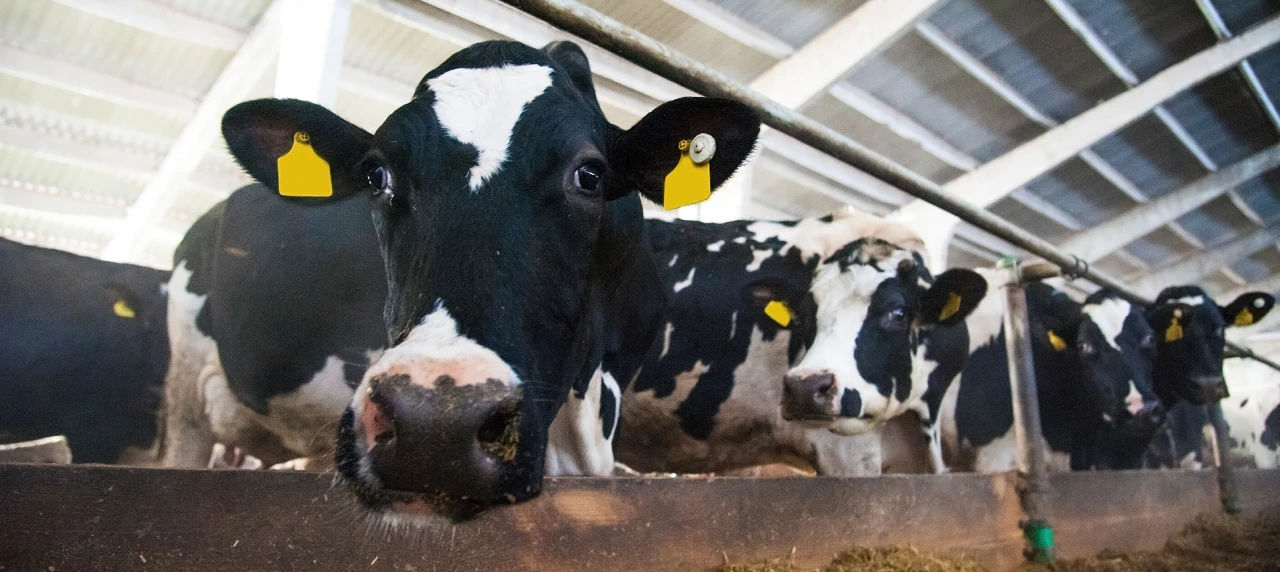
| Feature | Detail | Notes |
|---|---|---|
| Size | Approximately 3.5 million hectares ( around 8,5 million acres). | S. Kidman & Co. has undergone strategic divestments in recent years, selling off some large northern Australian holdings to focus on more strategically aligned assets and a premium beef brand. |
| Focus | Primarily beef production, transitioning from the traditional northern Australian pastoral model to focus on premium Wagyu-Angus F1 beef (Kidman Premium). | The shift is towards a more vertically integrated "paddock to plate" model, focusing on grain-fed beef for the mid-market segment. This includes developing the Kidman Premium beef brand. |
| Livestock | Predominantly cattle, with a current focus on Wagyu-Angus F1 crossbreds for their "Kidman Premium" beef brand. They also raise Santa Gertrudis cattle. | Cattle are raised on properties primarily in Queensland and the Northern Territory, then finished in northern New South Wales feedlots. Cattle are hormone-free (HGP Free) and Halal certified. |
| Production | Combined with Hancock Agriculture, they manage over 150,000 head of cattle. The newly acquired Jindabyne Station alone is expected to produce 3,000 terminal F1 Wagyu Angus calves annually. | The focus has shifted towards grain-fed programs, with cattle typically fed for 200-220 days to achieve specific marbling scores for the Kidman Premium brand. |
| Significance | It was once the biggest private landholder in Australian history. | The company is now majority-owned by Gina Rinehart's Hancock Agriculture (67%) with a minority stake held by Chinese partner Shanghai CRED (33%), ensuring it remains majority Australian-owned. |
Kidman & Co. is a name synonymous with the hugeness of the Australian outback and the legacy of large-scale pastoralism. Founded by the legendary Sir Sidney Kidman, known as the “Cattle King,” in 1899, the company has historically been one of Australia’s largest landholders and a dominant force in the beef industry. While its structure and portfolio have evolved over time, Kidman & Co. remains a significant player in the nation’s agricultural landscape under its current ownership.
Sir Sidney Kidman built his empire through a strategic acquisition of properties across large parts of the land away from the coast in Australia, particularly utilizing the great inland river systems to move cattle between properties based on the availability of feed and water, effectively “drought-proofing” his operations. At its peak, the company held an immense network of stations across South Australia, Western Australia, the Northern Territory, and Queensland.
Today, S. Kidman & Co. is owned by a joint venture, with Hancock Prospecting, led by Gina Rinehart, holding a 67% majority stake and the Chinese company Shanghai CRED holding the remaining 33%. This partnership, formed in late 2016, marked a new chapter for the historic company.
Under the current ownership, S. Kidman & Co. continues to operate as a major beef producer, with a focus on cattle grazing across a portfolio of properties primarily located in Queensland and the Northern Territory. While some divestments (the process of selling off an asset, subsidiary, or division of a company, or reducing an investment) of properties have occurred in recent years as part of a strategic realignment, the company retains significant holdings, including key stations that are integral to its cattle operations. As of early 2023, the company held four pastoral leases: Helen Springs in the Northern Territory and Morney Plains, Rockybank, and Durham Downs in Queensland. These stations encompass diverse landscapes and play different roles within the company’s integrated cattle business.
The operational strategy of S. Kidman & Co. in the current era involves using technology and innovation to improve efficiency and sustainability in their cattle production. There is also a focus on enhancing animal welfare and investing in infrastructure across their properties. Beyond traditional cattle grazing, the company has been developing its position in the premium beef market, expanding its grain-fed Santa Gertrudis and Kidman Premium beef brands, which sometimes incorporate Wagyu genetics. This move aims to cater to both domestic and international markets seeking high-quality Australian beef.
In a notable move that demonstrates diversification and a connection to iconic Australian heritage, S. Kidman & Co. recently acquired the classic Australian brands Driza-Bone and Rossi Boots. This expansion into the apparel industry signifies a broader vision for the company, potentially using the strong recognition of the Kidman name and its association with the outback lifestyle.
Kidman & Co. also maintains a commitment to supporting remote communities and essential services. A significant aspect of this is their ongoing partnership with the Royal Flying Doctor Service (RFDS), providing crucial support for their aeromedical operations across regional and remote Australia.
While the scale and specific composition of its landholdings have changed since the time of Sir Sidney Kidman, his heritage remains a powerful symbol of Australia’s pastoral legacy. Under its current ownership, the company is navigating the complexities of modern agribusiness, combining traditional cattle operations with strategic investments in technology, premium markets, and complementary ventures, while also acknowledging its historical significance and connection to the Australian outback.
12. The Australian Agricultural Company (AACo), Australia
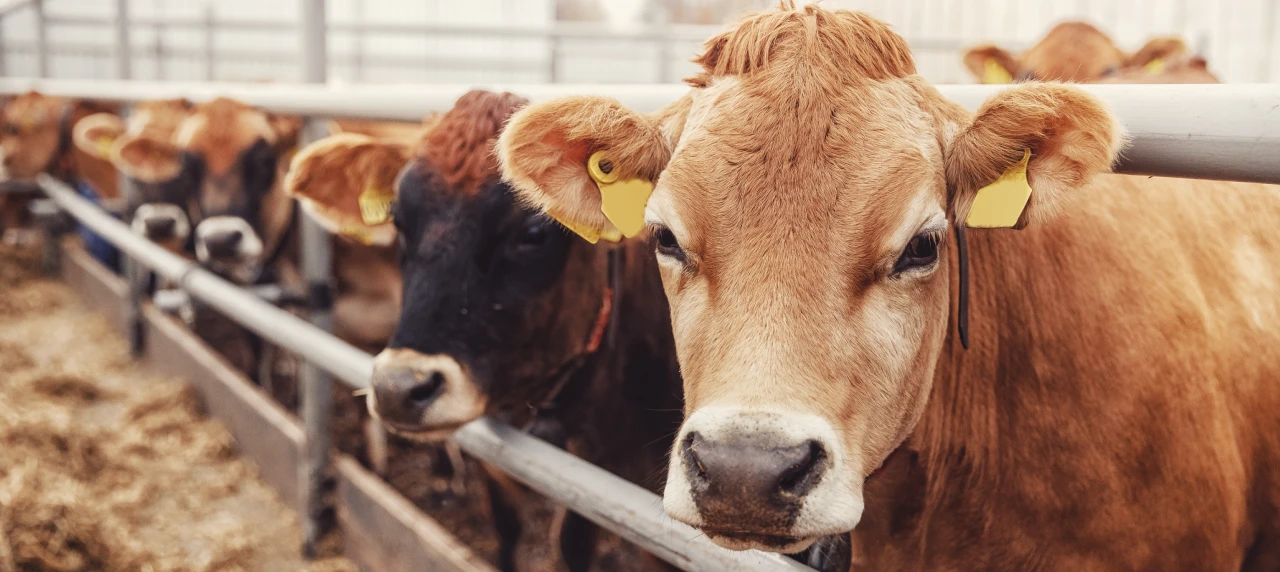
| Feature | Detail | Notes |
|---|---|---|
| Size | Approximately 6.5 - 7 million hectares (around 16-17 million acres) | This represents roughly 1% of Australia's land mass, spanning properties across Queensland and the Northern Territory. |
| Focus | Integrated cattle and beef production | AACo manages the entire supply chain from breeding and growing cattle on vast stations to feedlotting and distributing branded beef to global markets. |
| Livestock | Over 430,000 - 450,000 head of cattle | AACo owns and operates Australia's largest cattle herd, comprising various breeds, including Wagyu for premium beef brands. |
| Production | High-quality branded beef | Focuses on producing premium beef, primarily for export, with brands like Wylarah and Westholme. Also involved in live cattle sales. |
| Significance | Australia's oldest continuously operating company (established 1824) and a world-leading beef producer. | Plays a pivotal role in the Australian agricultural landscape, with a strong emphasis on sustainability, innovation, and meeting global demand for high-quality beef. |
The Australian Agricultural Company (AACo) stands as a monumental figure in Australia’s corporate history and a dominant force in its modern beef industry. Founded in 1824 by an Act of the British Parliament, it holds the distinction of being the country’s oldest continuously operating company. From its origins focused on fine wool, tobacco, and flax, AACo has evolved to become Australia’s largest integrated cattle and beef producer, managing a vast and strategic portfolio of properties across Queensland and the Northern Territory.
AACo’s landholdings are immense, covering approximately 6.5 to 7 million hectares, which equates to roughly one percent of Australia’s land mass. This extensive network of stations, feedlots, and farms is strategically managed to support a vertically integrated supply chain, from breeding and growing to finishing and processing cattle. The company runs a substantial herd, reported to be around 430,000 to 455,000 head, comprising a mix of breeds, with a significant focus in recent times on premium Wagyu and Brahman cattle, adapted to the northern Australian environment.
The company’s history is an example of Australia’s agricultural development, adapting to changing markets and environmental challenges. The shift from sheep to cattle production in the early 20th century and the strategic move towards northern Australia reflect this evolution.
Currently listed on the Australian Securities Exchange (ASX: AAC), AACo is led by a board and a management team with extensive experience in the agricultural sector. David Harris serves as the Managing Director and CEO, while Donald McGauchie is the Non-Executive Chairman. As of 2022, the Tavistock Group, the investment vehicle of Joe Lewis, held a majority share in the company.
AACo’s operational strategy is centered on its integrated supply chain, which allows for greater control over the quality and consistency of its beef products. The company places a strong emphasis on sustainability, implementing initiatives focused on landscape carbon sequestration (the process of capturing and storing atmospheric carbon dioxide (CO2) to reduce its concentration in the atmosphere), natural capital management (including biodiversity and land condition), animal health and welfare, and engaging with people and communities, including First Nations Peoples. Their Sustainability Framework guides these efforts, aiming to embed sustainable practices throughout their operations.
A key aspect of AACo’s business is its focus on premium-branded beef. The company is well-known for its high-quality grain-fed and Wagyu beef, marketed under brands such as Westholme, Darling Downs, and 1824. These brands target high-end domestic and international markets, leveraging the reputation of Australian beef and AACo’s commitment to quality.
Financially, AACo’s performance can be influenced by global beef markets and seasonal conditions. In the first half of FY25 (ending September 2024), the company reported an operating profit of $20.2 million and revenue of $195.5 million, driven by increased volumes despite challenging market conditions impacting Wagyu meat prices. AACo continues to invest in its operations, including the expansion of the Goonoo Feedlot, to enhance production capabilities and improve supply chain efficiency.
In essence, the Australian Agricultural Company is a company with a deep historical legacy that is actively shaping its future as a leader in premium beef production. Through strategic land management, a focus on high-quality breeds, a vertically integrated supply chain, and a growing commitment to sustainability, AACo is working to meet the demands of a global market while navigating the inherent complexities of operating on a grand scale in the diverse Australian landscape.
13. North Australian Pastoral Company (NAPCO), Australia
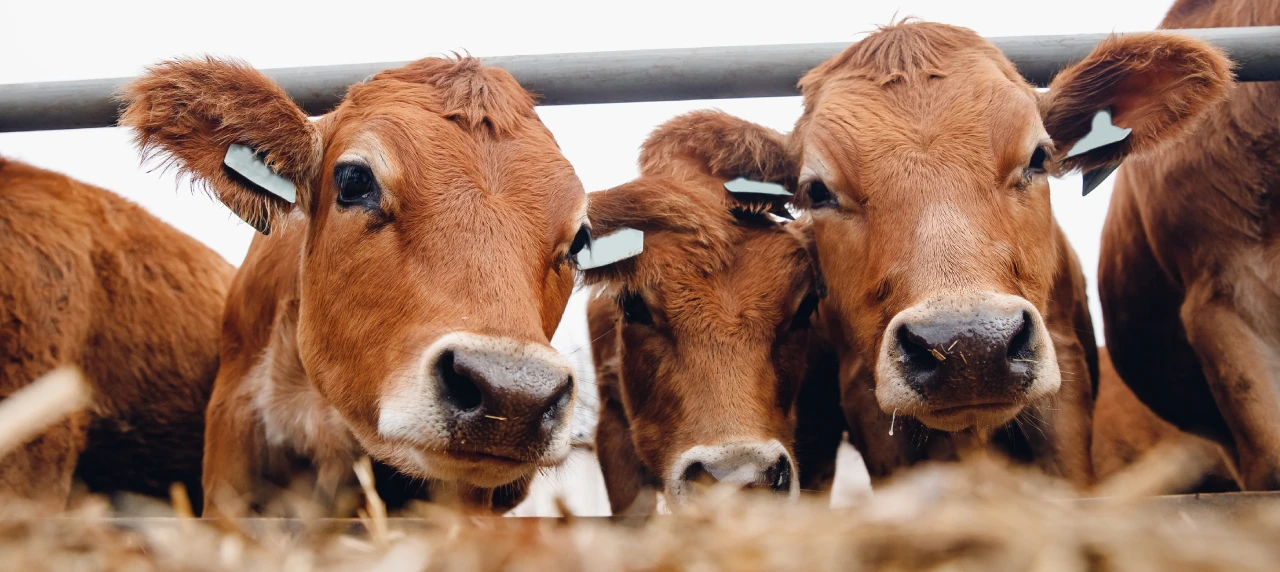
| Feature | Detail | Notes |
|---|---|---|
| Size | Over 6.1 million hectares (approximately 15 million acres) | Operates 14 cattle stations and the Wainui farm and feedlot across Queensland and the Northern Territory. |
| Focus | Beef cattle production | Integrated supply chain from breeding and growing to grain finishing. |
| Livestock | Around 200,000 cattle | Manages a large herd, known for developing unique composite breeds like the Alexandria and Kynuna composites. |
| Production | Beef cattle, including carbon-neutral branded beef | Produces pasture-raised and grain-finished beef, sold to Australian meat processors for domestic and international markets. Notably, they launched Australia's first carbon-neutral branded beef, "Five Founders." |
| Significance | One of Australia's oldest (founded 1877) and largest privately-owned cattle companies. | A leading national beef producer, recognized for its advanced composite breeding programs, commitment to sustainability, and partnerships in conservation (e.g., with Australian Wildlife Conservancy). |
The North Australian Pastoral Company (NAPCo) stands as a cornerstone of the Australian beef industry, boasting a rich history that goes back to its founding in 1877. As one of the nation’s oldest and largest privately-owned cattle companies, NAPCo has played a significant role in shaping the pastoral landscape across Queensland and the Northern Territory, managing vast tracts of land and a substantial cattle herd.
NAPCo’s expansive portfolio covers approximately 6 to 6.1 million hectares across northern Australia, an area that underscores the huge scale of its operations. This land supports a herd of around 200,000 cattle, making NAPCo a major producer of Australian beef. The company’s properties are strategically located, encompassing diverse environments from the Mitchell grass plains of the Barkly Tableland to the Channel Country, allowing for a carefully managed progression of cattle through their integrated supply chain.
The company has always been good at recovering from tough times and adjusting to new situations, surviving financial challenges and droughts since the late 19th century. Founded by a partnership of Queenslanders and English investors, NAPCo’s early focus was on establishing a presence in the Barkly Tableland, with Alexandria Downs being their first acquired station in 1877. Over time, the company expanded its landholdings into Queensland, recognizing the potential of the Channel Country for finishing cattle.
NAPCo is currently a privately owned company. Since 2016, the Queensland Investment Corporation (QIC) has held an 80% interest, with the descendants of the Foster family, who significantly invested in NAPCo from 1937, retaining a 20% share. This ownership structure combines institutional investment with the continuity of a long-standing pastoral family’s expertise. The company is led by a management team overseeing its extensive operations and strategic direction.
The NAPCo property portfolio comprises 13 cattle stations spread across Queensland and the Northern Territory, a feedlot and farm in Queensland’s Darling Downs (Wainui), and a depot in Mount Isa. Key stations include Alexandria Downs and Boonoke (though Boonoke is primarily a sheep station now and likely referenced in a broader historical context for NAPCo), while properties like Mantuan Downs and those in the Channel Country play crucial roles in their production cycle. These properties are chosen for their suitability for different stages of cattle production, from breeding in the north to growing and finishing further south.
NAPCo’s operational strategy is built around an integrated supply chain and a commitment to producing high-quality beef. A cornerstone of their approach is their worldwide famous composite breeding program, which began in the 1980s. This program focuses on developing Bos indicus-based composite breeds, such as the Alexandria and Kynuna Composites, designed to thrive in the challenging northern Australian environment while possessing desirable traits for meat quality and fertility. Cattle typically move from northern breeding properties to southern backgrounding and finishing properties, with a significant portion finished at their Wainui Feedlot.
Sustainability is a core value for NAPCo, deeply ingrained in their long history of land management. The company is recognized for its commitment to responsible practices, including sustainable grazing management, biodiversity conservation, and initiatives aimed at reducing their environmental footprint. Notably, NAPCo was the first cattle company in Australia to produce certified carbon-neutral branded beef, marketed under their “Five Founders” brand. This achievement, certified under the Australian Government’s Climate Active program, underscores their dedication to environmental responsibility throughout their supply chain. They also have a significant partnership with the Australian Wildlife Conservancy (AWC) to integrate conservation efforts across some of their properties.
NAPCo supplies cattle and branded beef products to a diverse range of customers in both global and domestic markets. Their focus on producing consistent, high-quality beef, supported by their integrated supply chain and sustainability credentials, positions them strongly in the competitive beef market. Recent developments for the company include continuing to invest in technology for operational efficiency and further advancing their sustainability initiatives.
In summary, the North Australian Pastoral Company is a historic and influential force in the Australian cattle industry. With a vast landholding, a large herd managed through an integrated supply chain, a pioneering breeding program, and a strong commitment to sustainability, NAPCo continues to honor its legacy while focusing on innovation and responsible beef production for the future.
14. Jumbuck Pastoral Company, Australia
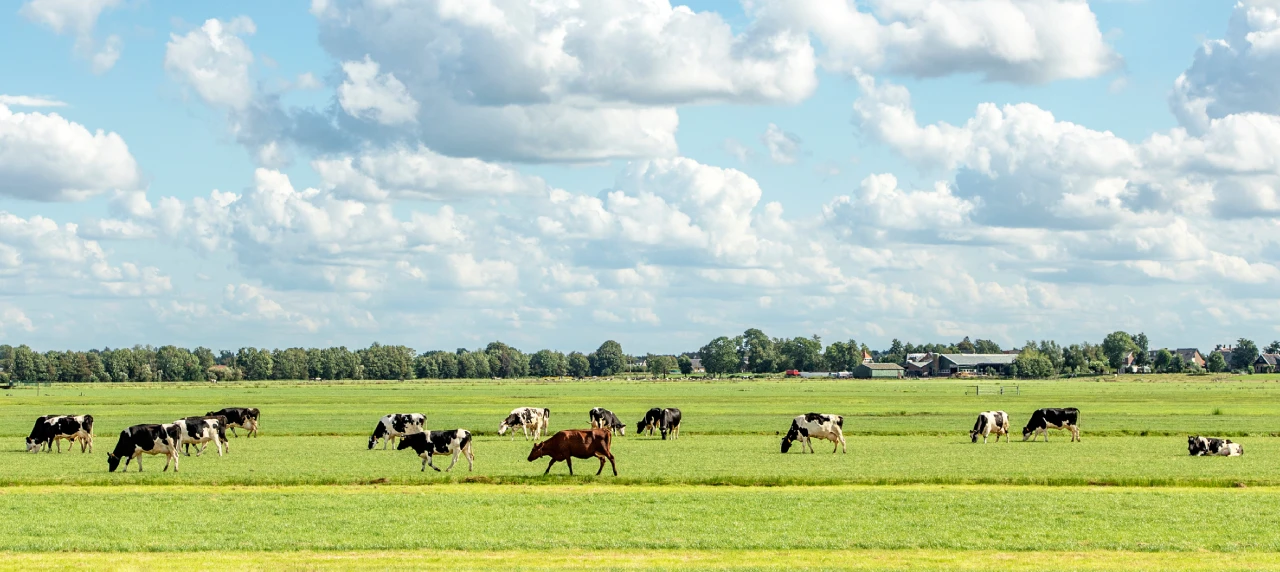
| Feature | Detail | Notes |
|---|---|---|
| Size | Historically managed a portfolio of around 5.2 million hectares (approximately 12.8 million acres) | While a recent family succession plan has led to a division of some assets, Jumbuck Pastoral remains one of Australia's largest landowners with substantial holdings across South Australia, New South Wales, and Western Australia. |
| Focus | Sheep and cattle production | Primarily focused on large-scale pastoral operations, producing both wool and livestock. |
| Livestock | Approximately 320,000 sheep and 80,000 cattle | Known for being one of Australia's biggest wool growers and a significant cattle producer. |
| Production | Wool and beef cattle | Produces natural and sustainable livestock and wool for Australian and international markets. |
| Significance | One of Australia's oldest (established 1888) and largest family-owned livestock production enterprises. | Has a long history of resilience and adaptation in the Australian outback. Known for its vast landholdings and significant contribution to the sheep and cattle industries. The MacLachlan family, its owners, is a prominent farming dynasty in Australia. |
Jumbuck Pastoral Company, a proudly Australian-owned family business with roots tracing back to 1888, stands as one of the nation’s largest and most significant livestock producers. Spanning vast and diverse landscapes across multiple states, Jumbuck is a major player in both the sheep and cattle industries, embodying a long-standing legacy of working the land in some of Australia’s most challenging environments.
The company was founded by H. P. MacLachlan and has remained under the ownership and stewardship of the MacLachlan family for over a century, now in its fourth generation. Based in Adelaide, South Australia, Jumbuck has grown from its origins in wool growing in the arid regions of South Australia to a diversified pastoral enterprise with holdings in South Australia, Western Australia, New South Wales, and the Northern Territory.
Jumbuck Pastoral manages an extensive portfolio of properties, reported to be around 5.2 million hectares as of late 2023, though this figure can change with strategic acquisitions and divestments. These stations are spread across a variety of climatic zones and landscapes, from the tough, dry country suited to Merino sheep to the northern regions where cattle thrive. The company has historically been one of Australia’s largest wool growers, managing substantial Merino flocks on its southern properties. On its northern stations, they run cattle adapted to those conditions.
Some of their notable properties have included Rawlinna Station in Western Australia, historically known as Australia’s largest sheep station (though it was recently sold to Consolidated Pastoral Company), and Wave Hill Station in the Northern Territory, a significant cattle property with a rich and complex history. Their portfolio also includes stations like Commonwealth Hill and Mulgathing in South Australia, and properties in New South Wales and other parts of Western Australia and the Northern Territory.
The operational strategy of Jumbuck Pastoral is characterized by its ability to manage a diverse range of livestock across varied and often challenging environments. This requires a deep understanding of different ecosystems, climate variability, and livestock management practices tailored to each region. The company employs a significant workforce across its stations, relying on skilled station hands, stockmen and women, and management teams to oversee the daily operations of these vast properties. Jumbuck has also explored technological advancements, such as the implementation of Energy-as-a-Service solutions on some of their remote sites to improve efficiency.
As a multi-generational family business, Jumbuck Pastoral has navigated the cyclical nature of agricultural markets and the inherent risks associated with operating in Australia’s variable climate. Their long-term perspective and commitment to reinvesting in their properties and livestock have been key to their enduring success. While the company has recently undergone some restructuring of its portfolio among family members, the MacLachlan family remains deeply involved in the Australian pastoral industry.
Jumbuck Pastoral Company stands as a testament to the resilience, hard work, and forward-thinking required to operate on a grand scale in the Australian outback. Their continued presence as a major producer of sheep and cattle across diverse landscapes highlights the significant contribution of family-owned enterprises to the nation’s agricultural output and its historical narrative.
15. Consolidated Pastoral Company, Australia

| Feature | Detail | Notes |
|---|---|---|
| Size | Operates 8-9 cattle stations covering over 3.2 - 3.6 million hectares (about 7.9-8.9 million acres) | Owns stations across Western Australia, the Northern Territory, and Queensland. Also has two feedlots in Indonesia. |
| Focus | Beef cattle production and live export | Integrated operations including breeding, growing, and finishing cattle, with a strong focus on supplying beef and live cattle to Asian consumer markets, as well as domestic feedlots and processors. |
| Livestock | Approximately 300,000 - 370,000 head of cattle (carrying capacity) | Manages a large herd, with a focus on high-quality composite cattle for various markets. |
| Production | Beef cattle (grass-fed and grain-finished), live cattle export, and some diversified crops | Produces beef for domestic and international markets, particularly Asia. Also involved in live cattle exports to Indonesia. |
| Significance | One of Australia's largest privately owned cattle producers. | Established in 1983, CPC is a significant player in the Australian beef industry, known for its strategic location near Asian markets, commitment to animal welfare (e.g., pain-free surgery initiatives), and efforts in sustainable beef production and carbon reduction (e.g., Beef Cattle Herd Management method). |
Consolidated Pastoral Company (CPC) stands as a significant force in the Australian agribusiness sector with a history dating back to 1879 and a strategic focus that extends beyond Australia’s shores. While its origins are firmly rooted in the Australian pastoral landscape, CPC is currently a privately owned company with a notable international dimension.
CPC was formally consolidated in 1983 and has grown to become one of Australia’s largest beef cattle enterprises. As of early 2025, the company owns and operates a portfolio of nine station aggregations across Queensland, the Northern Territory, and Western Australia. These vast landholdings cover more than 3.2 million hectares and are home to a substantial herd of over 300,000 cattle.
Since October 2020, CPC has been wholly owned by the UK-based Hands Family Office, led by Guy and Julia Hands. Despite this international ownership, the company is managed by an experienced Australian and Indonesian team, with Troy Setter serving as the Chief Executive Officer. This structure reflects CPC’s operational footprint, which includes a significant presence in Indonesia.
A key aspect of CPC’s operations is its integrated supply chain. The company manages cattle from breeding and growing on their Australian stations through to finishing. A crucial component of their strategy is their ownership of a 90% interest in a joint venture that operates two modern beef feedlots in Indonesia. These feedlots, located in Lampung (South Sumatra) and Medan (North Sumatra), play a vital role in supplying beef to the Indonesian market, the largest economy in Southeast Asia. This integrated model allows CPC to control quality and efficiency across a significant portion of the beef supply chain, from cattle station to a key consumer market.
CPC’s properties in Australia are spread across diverse climatic and environmental regions, each contributing to different stages of the cattle production cycle. Their Northern Territory and Western Australian stations, including Newcastle Waters and Carlton Hill (where they hold a long-term sub-lease), are primarily focused on breeding and producing high-quality composite cattle. These cattle are then often moved to CPC’s Queensland properties, such as Isis Downs and Wrotham Park, for backgrounding and growing before potentially entering the feedlots in Indonesia or being supplied to other markets.
In a notable recent development in early 2025, CPC diversified its livestock operations with the acquisition of Rawlinna Station, Australia’s largest sheep station, located in Western Australia, from Jumbuck Pastoral Company. This acquisition signifies CPC’s return to large-scale sheep and wool production after an absence of 25 years and indicates a strategic move to build a more diversified portfolio across different commodities and geographies. The company has stated its intention to continue Rawlinna as a sheep property, building on its legacy.
Beyond cattle and now sheep, CPC also utilizes over 20,000 hectares of its land for cropping, further diversifying its agricultural activities. The company supplies cattle and beef to a variety of domestic and international customers, with a strong focus on Asian consumer markets, particularly through their Indonesian feedlot operations.
Consolidated Pastoral Company’s operational strategy emphasizes productivity, animal welfare, environmental responsibility, and innovation. Their integrated supply chain, spanning two countries, provides a competitive advantage in reaching key markets. With a focus on both traditional pastoralism and strategic diversification, CPC is positioned as a dynamic agribusiness navigating the complexities of the global food supply chain.
Conclusion
Ultimately, the world’s largest farms stand as powerful symbols of humanity’s capacity for large-scale food production. They represent significant investments in land, livestock, and technology, driven by the fundamental need to meet the increasing demand for food globally. Their continued operation, adaptation to environmental realities, and integration of modern practices will undoubtedly shape the future of agriculture on a grand scale, making them subjects of ongoing fascination and importance in the global food story.
Read More



